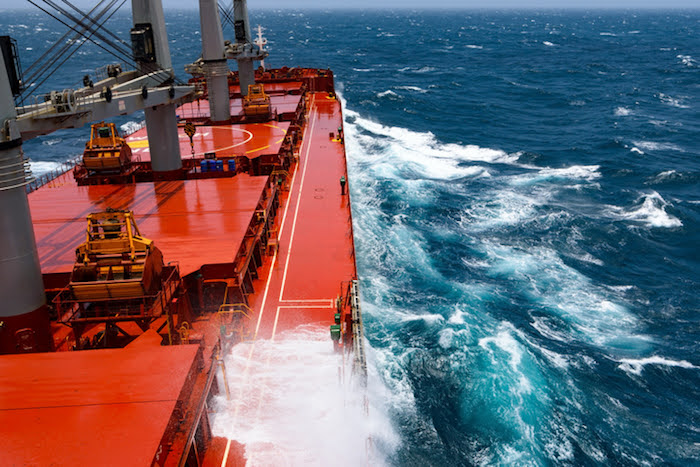The recent back-and-forth attacks between Iran and Israel has added another ingredient to the already stormy mix Indian shipping and trade are in. Rates are expected to rise around 20-25 percent from already elevated level in the next few weeks if disruptions continue amid ongoing tensions surrounding the Red Sea, senior government officials and industry industry experts said.
“If you look at the shipping container rates originating out of southeast Asia to Europe, let alone India to Europe, prices are nearly 40-50 percent higher compared to last year. With the new escalations, shipping rates may rise further if peace is not restored in a couple of weeks,” a senior government official told Moneycontrol.
The official added that the average shipping cost for a 40-foot container for the Southeast Asia-India-European Union route was around $ 3,077 in March.
He added that shipping rates had dipped in March after a slowdown in attacks on commercial vessels by Yemen’s Houthi rebels, but rates are expected to rise once again.
On April 1, Israel bombed the Iranian consulate in Damascus, killing multiple senior Iranian officials. In response, Iran and its proxies launched strikes inside Israel on April 13.
Following Iran’s recent attack, several countries in the region, including Iran, Jordan, Iraq, Lebanon and Israel, temporarily closed their airspaces as a precautionary measure, before ending the closure on April 14, albeit with restrictions.
This will force Indian exporters to seek alternative routes avoiding the affected air spaces, pushing up air freight charges.
Several shipping companies have been forced to suspend transit through the crucial Middle East maritime route, which has led to longer shipping times and an increase in costs, as tensions remain high over strikes on ships in the Red Sea by Iran-backed Houthi rebels based in Yemen.
According to Veson Nautical, a company that provides freight management solutions to shipping companies, the global shipping industry faces a “shadow of uncertainty”.
“Several elements of unpredictability” are affecting the second-quarter forecast, including elevated interest rates in Western economies raising the risk of a serious downturn, possibly stalling growth; and the ongoing geopolitical tensions such as the crisis in the Red Sea, Veson said in a report on April 13.
“Any notable escalation or de-escalation in these conflicts could profoundly affect the broader economic trajectory,” it added.
Finally, the potential for disruption in the Suez Canal and the Panama Canal injects additional instability into the economic landscape. Certain military groups can cause disruptions for the former, while for the latter, it is natural occurrences that pose a potential threat.
Ajay Sahai, director general of the Federation of Indian Export Organisations, also expects air freight from India to Europe will rise 10-15 percent in the coming few weeks.
“There has been a rise in air cargo traffic between India and Europe due to the disruption in shipping channels, and going forward, flying time and air freight rates will rise because you can’t fly over Iran,” Sahai told Moneycontrol.
Similarly, according to WorldACD air cargo market data for the first week of April, air freight rates for traffic between India and Europe have risen by more than $4 per kg in since the last week of March, due to growing demand for cargo by air between India and Europe due to rising disruption in global shipping.
Middle East South Asia (MESA) to Europe air cargo spot rates have also soared in the last three weeks to around twice their level this time last year, rising by $3.43 a kg in a week.
“A big surge in spot rates from Middle East & South Asia (MESA) to Europe in recent weeks was reported, especially from India and Bangladesh, linked to strong demand developments combined with supply issues caused by disruptions to container shipping and Ramadan,” WorldACD said in its report on April 14.
Alongside the continuing rise in rates from Asia Pacific and MESA origin points, boosted by strong demand from cross-border e-commerce and because of the ongoing disruptions to container shipping in the Red Sea, another factor beginning to have an impact on rates is increasing jet fuel prices, which rose by more than 4 percent in the first week of April compared with the previous week, and rose more than 3 percent over the previous month, although they remain slightly below their level this time last year, the WorldACD report said.
Source: Hellenic Shipping News






